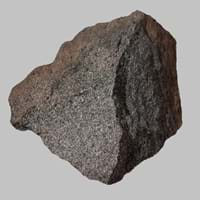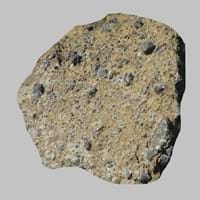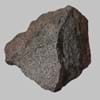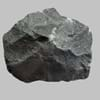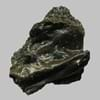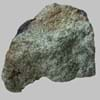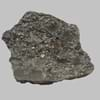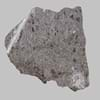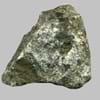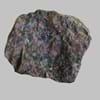Definition
Trachyandesite is an extrusive igneous rock.
Hyaloclastite is an aggregate of fine, glassy debris formed by the sudden contact of hot, coherent magma and cold water or water-saturated sediment
Discoverer
Unknown
Unknown
Etymology
From French trachyandésite, trachy + andésite andesite, a lava intermediate in composition between trachyte and andesite
From hyalo + -ite
Class
Igneous Rocks
Igneous Rocks
Sub-Class
Durable Rock, Medium Hardness Rock
Durable Rock, Soft Rock
Other Categories
Fine Grained Rock, Opaque Rock
Fine Grained Rock, Opaque Rock
Texture
Glassy, Massive, Porphyritic, Scoriaceous, Vesicular
Pyroclastic
Color
Black, Brown, Light to Dark Grey
Brown, Grey, Yellow
Durability
Durable
Durable
Appearance
Dull and Soft
Dull
Interior Uses
Countertops, Decorative Aggregates, Homes, Interior Decoration
Countertops, Decorative Aggregates, Homes, Interior Decoration
Exterior Uses
As Building Stone, As Facing Stone, Garden Decoration
As Building Stone, As Facing Stone, Paving Stone, Garden Decoration, Office Buildings
Other Architectural Uses
Curbing
Curbing
Construction Industry
Building houses or walls, Cobblestones, for Road Aggregate, Rail Track Ballast, Roadstone
Building houses or walls, Construction Aggregate
Medical Industry
Not Yet Used
Not Yet Used
Antiquity Uses
Artifacts, Sculpture
Artifacts, Jewellery, Monuments, Sculpture
Commercial Uses
Creating Artwork, Pottery
Cemetery Markers, Creating Artwork
Types
Basaltic Trachyandesite
Welded tuff, Rhyolitic tuff, Basaltic tuff, Trachyte tuff and Andesitic tuff.
Features
Has High structural resistance against erosion and climate, Very fine grained rock
Always found as volcanic pipes over deep continental crust
Archaeological Significance
Monuments
Not Yet Used
Used
Famous Monuments
Not Applicable
Data Not Available
Famous Sculptures
Data Not Available
Data Not Available
Formation
Trachyandesite is a fine-grained, hard rock which is a type of metasomatite, essentially altered basalt. It forms with or without crystallization, either below the surface as intrusive rocks or on the surface as extrusive rocks.
Hyaloclastite is a type of Igneous rock is formed through the cooling and solidification of lava or magma.
Mineral Content
Alkali feldspar, Biotite, Olivine, Plagioclase, Pyroxene, Sodic plagioclase
Calcite, Chlorite
Compound Content
Aluminium Oxide, CaO, Iron(III) Oxide, FeO, Potassium Oxide, MgO, MnO, Sodium Oxide, Phosphorus Pentoxide, Silicon Dioxide, Titanium Dioxide
Hydrogen Sulfide, Sulfur Dioxide
Types of Metamorphism
Cataclastic Metamorphism, Contact Metamorphism, Regional Metamorphism
Burial Metamorphism, Cataclastic Metamorphism, Contact Metamorphism, Hydrothermal Metamorphism
Types of Weathering
Biological Weathering, Chemical Weathering, Mechanical Weathering
Biological Weathering, Chemical Weathering, Mechanical Weathering
Types of Erosion
Chemical Erosion, Coastal Erosion, Water Erosion, Wind Erosion
Chemical Erosion, Coastal Erosion
Grain Size
Fine Grained
Fine Grained
Fracture
Conchoidal
Not Available
Streak
Light to dark brown
Colorless
Porosity
Less Porous
Highly Porous
Luster
Earthy
Dull and Grainy
Compressive Strength
Not Available
Cleavage
Perfect
Not Available
Toughness
2.3
Not Available
Specific Gravity
2.8-3
Not Available
Transparency
Opaque
Opaque
Density
2.9-3.1 g/cm3
Not Available
Specific Heat Capacity
Not Available
Resistance
Heat Resistant, Pressure Resistant, Wear Resistant
Heat Resistant
Deposits in Eastern Continents
Asia
India, Russia
Russia
Africa
South Africa
South Africa
Others
Not Yet Found
Not Yet Found
Deposits in Western Continents
North America
Canada, USA
Canada, USA
South America
Brazil
Brazil, Colombia
Deposits in Oceania Continent
Australia
Not Yet Found
Not Yet Found
All about Trachyandesite and Hyaloclastite Properties
Know all about Trachyandesite and Hyaloclastite properties here. All properties of rocks are important as they define the type of rock and its application. Trachyandesite and Hyaloclastite belong to Igneous Rocks.Texture of Trachyandesite is Glassy, Massive, Porphyritic, Scoriaceous, Vesicular whereas that of Hyaloclastite is Pyroclastic. Trachyandesite appears Dull and Soft and Hyaloclastite appears Dull. The luster of Trachyandesite is earthy while that of Hyaloclastite is dull and grainy. Trachyandesite is available in black, brown, light to dark grey colors whereas Hyaloclastite is available in brown, grey, yellow colors. The commercial uses of Trachyandesite are creating artwork, pottery and that of Hyaloclastite are cemetery markers, creating artwork.
